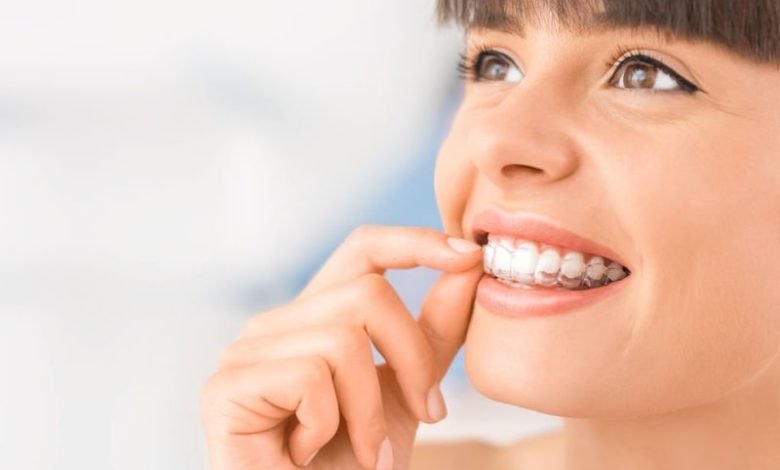The Fascinating History of Clear Aligners

What do you know about the timelines of orthodontics? Well, for non-lovers of history, you’ll be pleased to know that archaeologists discovered crooked teeth in human remains over 50,000 years ago.
Like in the olden days, dental aesthetics through time has always been a priority when it comes to perfecting our smiles. However, the scientific foundation of orthodontics was laid by the occlusion (bite). The occlusion is also why orthodontics has progressed into the advanced technology that it is today with clear braces, traditional metal braces, and clear aligners.
A look into the orthodontic timelines
Ancient times
Archaeologists discovered metal bands around the teeth of Egyptian mummies. They believed that these bands were tied together with catgut. Simple orthodontic appliances were also found among early Roman and Greek artifacts.
Documents found as early as 25 BC to AD 50 recommended the extraction of a baby tooth if the second tooth comes in before the baby tooth is lost. Then, after the extraction of the old tooth, the new tooth can be pushed forward with your finger until it gets into place. This advice remains valid even today, especially since you find today’s kids making frantic attempts to move their teeth into a comfortable position.
16th – 18th centuries
Very little happened in the “middle-ages,” but much progress was made in the 16th Century. Dentists were referred to as “operators for the teeth.” They used waxed impressions. In 1756, most dentists made regular use of Plaster of Paris impressions. Bad bites of malocclusions were referred to as “irregularities,” while tooth movement was known as “regulating.”
France led the field of dentistry in the 18th Century. Pierre Fauchard is best known as the “Father of Modern Orthodontia.” He laid the scientific foundation for orthodontics. During such time, very little attention was given to the biting function. Instead, better attention was placed on the upper teeth. Treatment was expensive and reserved for the rich.
The United States Stepped up in the 19th Century
In 1822, Gunnel, J. invented a headgear that fastens to the jaw from the inside of the mouth to exert pressure gently on the teeth. In 1840, Harris Chapin wrote and published “The Dental Art.” This was the first classic book on dentistry – one that discussed soldering knobs on bands (brackets) to help with tooth erosion and applying gold caps for bite opening. In 1839 when Charles Goodyear invented the vulcanized rubber, E. G. Tucker introduced rubber bands in orthodontic appliances.
Edward Angle, the father of modern orthodontics, discovered the true relationship of malocclusion (misaligned teeth and bad bite) and proffered scientific solutions with orthodontic appliances starting in 1880.
What’s going on in the 20th Century?
Before the 1970s, orthodontists wrapped bands of metals around each tooth. A wire connected each band and slowly moved into position. However, the invention of dental adhesives allowed bonding of the brackets to tooth surfaces. On the other hand, stainless steel replaced silver and gold as the primary choice for wires. This led to a significant reduction in the cost of braces. In addition, lingual braces were introduced in the 1970s. Lingual braces run inside the surfaces of the teeth instead of outside.
In the 90s, nickel-titanium metal discovered in the 60s by NASA became widely available and has been used in the fabrication of archwires. Archwires help the teeth to move faster, with minimal discomfort and needing very few adjustments. Treatment that couldn’t be completed in 4 years can now be completed in less than two years.
The introduction of invisible braces
Zia Chishti introduced Invisalign in 1997. Invisalign is a transparent aligner and also removable. So, instead of attaching noticeable braces to the upper and lower teeth, one now wears a series of clear aligners in succession to straighten the teeth.
Clear aligners are made using 3D computer technology. The patient’s dental impressions are obtained and used during production. Unlike regular braces, you can remove your clear braces when you want to eat and brush. It is also hard to detect when worn, making it a perfect solution for adults and teens self-conscious about putting on braces.
YOU MIGHT ALSO LIKE:
https://foxnewsflip.com/how-to-clean-and-care-for-your-invisalign-aligners
Orthodontics has come a long way
Orthodontic treatment was only reserved for the rich in the past. It was also reserved only for those with powerful jaw and teeth deformities. Today, it is considered a routine dental procedure accessible to most kids and teens. The beautiful smiles created by orthodontic treatment give many people higher self-esteem.
If you or your loved one are considering orthodontic treatment, give Beam Clear Aligners a try. They are on a mission to make dental care more affordable and accessible to all Australians.






